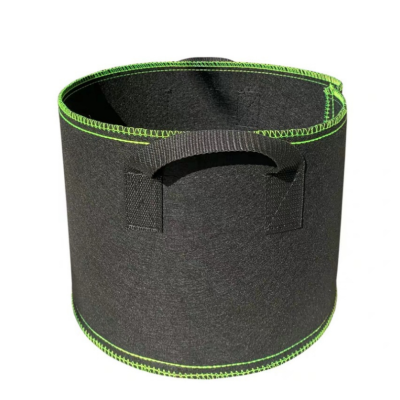Introduction:
Fabric grow bags have gained popularity in recent years as a sustainable and practical solution for planting various types of plants. These bags are made from breathable fabric materials, such as geotextile or non-woven polypropylene, which provide excellent drainage, aeration, and root development for plants. Whether you’re an avid gardener, a beginner, or have limited space, fabric grow bags offer numerous advantages over traditional pots or containers. In this ultimate guide, we’ll explore the benefits of fabric grow bags, their uses, how to choose the right size, and essential tips for successful gardening.
Benefits of Fabric Grow Bags:
- Improved Drainage: Fabric grow bags allow excess water to easily drain through the sides, preventing waterlogging and root rot. The breathable fabric also helps maintain optimal moisture levels, preventing overwatering or underwatering.
- Enhanced Aeration: The porous fabric promotes air circulation throughout the root zone, preventing the soil from becoming compacted. This aeration encourages root development, leading to healthier and more vigorous plants.
- Healthier Roots: Unlike traditional pots, fabric grow bags prevent root circling and promote the development of a fibrous root system. The fibrous roots efficiently absorb nutrients and water, resulting in healthier and more productive plants.
- Temperature Regulation: Fabric grow bags offer better temperature regulation than plastic pots. The breathable fabric helps regulate soil temperature by allowing excess heat to escape during hot weather and providing insulation during colder seasons.
- Portable and Space-Efficient: Fabric grow bags are lightweight and easy to move, allowing you to optimize sunlight exposure for your plants. They are perfect for balconies, patios, or small gardens where space is limited.
- Versatile: Fabric grow bags can be used for various types of plants, including vegetables, herbs, flowers, and shrubs. They are suitable for both indoor and outdoor gardening, making them a versatile choice for plant enthusiasts.
Choosing the Right Size:
When selecting fabric grow bags, choosing the appropriate size is crucial for optimal plant growth. Consider the following factors:
- Plant Type: Different plants require different space for root development. Larger plants, such as tomatoes or fruit trees, need bigger grow bags compared to smaller herbs or flowers.
- Plant Density: If you plan to grow multiple plants in a single grow bag, consider selecting a larger size to ensure adequate space for each plant’s roots.
- Space Availability: Measure the available space where you intend to place the grow bags. This will help determine the suitable size and number of bags that can comfortably fit in your gardening area.
- Future Growth: If you are growing perennial plants or plants that will continue to grow larger over time, it’s wise to choose a slightly larger grow bag to accommodate their future growth.
Tips for Successful Gardening:
- Soil Selection: Use a high-quality, well-draining potting mix or a mixture of garden soil, compost, and perlite. Avoid using dense or compacted soils that may hinder root growth and drainage.
- Watering: Fabric grow bags may require more frequent watering compared to traditional pots since they tend to dry out faster. Monitor the moisture levels regularly and water accordingly, ensuring the soil remains consistently moist but not waterlogged.
- Fertilization: Regularly feed your plants with organic or slow-release fertilizers to provide essential nutrients. Follow the specific requirements of each plant to maintain optimal growth and productivity.
- Sunlight Exposure: Place the grow bags in an area that receives adequate sunlight based on the plants’ requirements. Most plants need a minimum of 6-8 hours of direct sunlight per day.
- Pruning and Training: Some plants, like tomatoes or vining vegetables, may require pruning and training to maintain their shape and encourage better fruit production. Regular








